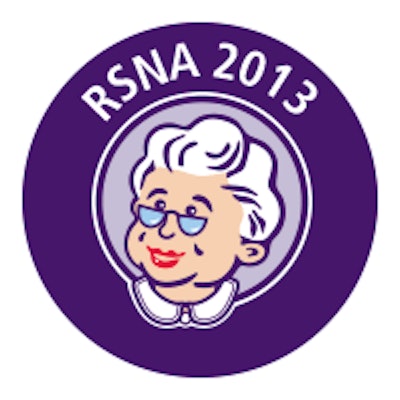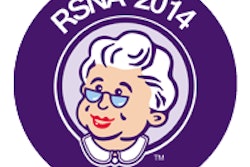
CHICAGO - Both patients and physicians enjoy the benefits of a patient-controlled, image-based electronic personal health record (PHR), according to results presented on Wednesday afternoon from a pilot site for the RSNA's Image Share network.
Surveys of patients and physicians at the University of California, San Francisco (UCSF) found that 94% of patients and 91% of physicians were satisfied or very satisfied with their use of Image Share, reported presenter Dr. Anand Patel.
One of five pilot sites for the Image Share network, UCSF began enrolling patients in August 2011. Initially, patients were enrolled when they came to the film library to obtain an image CD. Patients were given information on Image Share using a standard informational script, along with formal brochures.
However, only 90 patients were enrolled from August 2011 to May 2012. This was largely due to patients being in a hurry and the fact that not many patients came directly to the film library, Patel said.
As a result, the institution decided in June 2012 to redesign the patient recruitment process. Patients are now met by a recruitment coordinator prior to their imaging study and enrolled while they wait for the scan, he said.
In August 2012, the researchers began a survey to gauge patient and physician satisfaction with the system. After using Image Share, patients were asked to complete a two-page survey and their physician was asked to fill out a one-page form. Patients received $20 gift cards if they mailed back the survey.
The survey asked patients and physicians about the perceived benefits and utility of patient-controlled electronic PHRs; the importance of health record privacy; their baseline computer, Internet, and social media usage; satisfaction; security; and repeat imaging.
As of November 30, 2013, 1,482 patients have signed on for use of Image Share. For these patients, 9,777 imaging studies have been sent to the Image Share online clearinghouse. Current enrollment is averaging approximately 46 patients per week.
Surveys were sent to approximately 650 individuals, as the survey period began after enrollment. Surveys had been returned by 252 patients and 124 physicians by September 2013. The 252 patients had a mean age of 44 years (range, 8 months to 85 years) and included 124 males and 128 females. They lived an average distance of 79 miles from UCSF (range, 1 to 2,525 miles).
Ninety-five percent of the patients used a computer on a daily basis, while 5% used one weekly. Furthermore, 62% used the Internet for social networking or online purchasing on a daily basis, while 29% and 13% performed those tasks on a weekly or monthly basis, respectively. Six percent never used the Internet for social networking or online purchasing.
Of the patients, 94% said they were very satisfied or satisfied with Image Share, while 4% were neutral and 2% indicated they were unsatisfied or very unsatisfied. Less than 2% reported that they had repeat imaging performed due to their physician having difficulty accessing Image Share.
In other survey findings, 67% of patients strongly agreed or agreed that they were concerned about maintaining the privacy of their health records. However, 87% agreed or strongly agreed that they were comfortable with the privacy and security of how their images were transferred to their doctor or consultant.
Of the physician responses, 91% indicated they were very satisfied or satisfied with Image Share, while 4% were neutral and 5% were unsatisfied or very unsatisfied. Seven percent reported that difficulty accessing Image Share led to a repeat imaging study.
In other physician survey results, 95% strongly agreed or agreed that it was critically important that they saw the medical image(s) in a short period of time. Also, 92% strongly agreed or agreed that they were comfortable with the privacy and security of how their patient's images were sent to them.
Positive comments
A variety of positive comments were received from patients, including statements such as "accessing images over the Internet is a very compelling reason for me to use UCSF over anyone." Patients also said they liked that they could now send their scans to any physician, anywhere, according to Patel.
Other comments referred to the benefits of being able to log in to see their child's reports and images on their iPhone the following day, and being able to review their images with a spouse who could not be at the appointment.
A few negative comments were also received, including one person who felt the process to access the images online was not well-defined and there needed to be more detailed instructions. Another patient recommended emailing results after the doctor has consulted with the patient, while another suggested it would be very helpful to show an image of a healthy system along with the image of the patient's system for comparison purposes, according to Patel.
Overall, patients and physicians reported high satisfaction with the system, although Patel noted that improvements continue to be made with the online registration process and Web interface.
Physician use of Image Share is difficult to gauge at this point, as most patients have a UCSF referring physician and don't require use of the system, Patel said. It's also unclear if Image Share has led to a decrease in repeat exams, as a larger sample is needed.
Patel also acknowledged a potential selection bias from the study given the computer-literate study cohort who already believed in the utility of Image Share.
Future research
Future studies of Image Share will involve further demographic and patient analysis to assess factors relating to the adoption of the system, including age, sex, distance the patient resides from the medical center, type(s) of patient imaging exams, and chief diagnosis, according to Patel. The researches will also perform a cost analysis to determine if there are any savings to the radiology department from reductions in CD distribution.
Enrollment in Image Share will continue through 2014, and cumulative results from all Image Share pilot sites will be tabulated, Patel said.



















